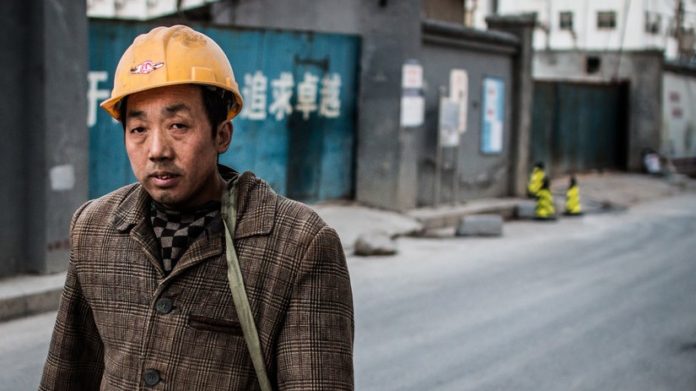After an eight-year-long investigation, political scientist Diana Fu finally launched her book on informal labour activism in China in January. Packed into a sold-out auditorium were fellow academics, members of the public, and a strong contingent of students, all eager to hear Fu’s presentation on a truly unique piece of research.
Mobilizing without the Masses: Control and Contention in China examines the techniques used by labour activists to educate and empower migrant workers. These workers often have a weak status and poor awareness of legal rights, and they are easily exploited by factory bosses and corrupt local officials.
The core motivation of the book was to uncover how this activism can succeed without going face-to-face through mass protests, which are subject to the will of an iron-fisted government.
The research was conducted under the previous Hu administration, but has direct implications for understanding civil society activism in China today. Under the current Xi administration, crackdowns have become far more heavy-handed, making the danger of civil society activism even more apparent.
Immersive research: the practice of political ethnography
Fu, a University of Toronto assistant professor of Asian Politics and affiliate of the Munk School of Global Affairs Asian Institute, conducts research that falls under political ethnography, where researchers immerse themselves in a scenario rather than just studying reports and data.
Between 2009 and 2011, she participated in the everyday work of a number of labor NGOs in China, following workers to government bureaus, watching them being coached by labour activists, and observing flash demonstrations (protests that last only a few minutes before participants disband).
Fu was able to establish herself using her language and interpersonal skills as well as cultural and social knowledge. This meant gaining the trust of members of illegal organizations to attend meetings and get the real story from the leaders.
“China is hardly a safe place for activism, but it is due to this climate that it is important to study patterns of mobilization,” says Fu. “How do weak citizens organize under repression? It is extremely risky to take to the streets, so how does it happen at all?”
There are some 280 million migrant workers in China (more than seven times the population of Canada), yet only one state-run union to represent them. Unsurprisingly, migrants are consistently failed by this arm of the state, as local officials often ignore workers’ complaints when wages are overdue, or when compensation for an injury is owed but not received.
Alternative vehicles for assisting workers started popping up via word-of-mouth: NGOs that teach workers their rights and how and where they can demand them. These organizations provided more than just knowing what the law says — they also trained workers on how to induce unresponsive officials to do their jobs in terms of enforcing labour laws.
Fu first came across these NGOs while working as an interpreter. On the surface, members would say they only provide legal advice to those in need, but “the political ethnographer in me wasn’t satisfied, I wanted to know how they were able to survive and how they really operated,” says Fu.
She spent 18 months conducting visits and meetings, particularly in Beijing and the Pearl River Delta region in South China where she gathered data on behaviour, leaders, resources, and strategies. At the time of studying, Fu identified 72 active groups across China, with whom she sat in on workshops and meetings.
Justice through media exposure and ‘suicide shows’
One method workers are taught is to threaten unresponsive officials with reporting their inaction to enforce labour laws to the domestic media. Negative publicity and unfavourable attention from higher-ups is the last thing these local officials want. Failing that, there are rarely used but effective extremes, such as making a public scene by staging a “suicide show”, which is a strategic performance of suicide in order to attract attention from the authorities.
The disruption of social stability is key to alerting the authorities, and such an extreme measure is sure to reach those who will throw the book at the official.
Fu followed migrant workers as they went through their grievance processes with bureaucrats. One individual, known under the pseudonym of ‘Ms. Chang’, was injured in a workplace accident, but her boss was unwilling to pay for medical expenses despite legal obligations.
“I watched her being dismissed by agencies one after another until she finally threatened the chief,” says Fu. “A labour activist was coaching her, telling her when and how to make these threats. The bureau chief understood it was a challenge to his authority and he dispatched a team to the factory on the spot, then she received compensation.”
The brilliance behind this mobilizing tactic is that it disguises collective action behind individual acts. By empowering individuals or small groups to demand their fair due, the activists avoid mobilizing people to take to the streets en masse, which can be a risky manoeuvre. At the same time, they help workers secure compensation and build collective consciousness by training them to recognize the sources of exploitation. This is a novel dynamic in our understanding of mobilization in an authoritarian state.
The great irony underpinning communist China
Under the Xi administration, the majority of these NGOs were shut down after a 2015 crackdown. While this activism is one element of a wider ecosystem that includes large-scale strikes, it is both a form of genuine mobilization and a political compromise.
“It’s essentially a form of self-censored activism,” Fu explains. “Activists have to limit their numbers in confrontations with authorities in order to lower political risks.”
There is an incredible irony underlying a state whose communist ideology contradicts the reality of the regime for migrant workers, be they blue or white collar.
Genuine structural change in China would take something far more formidable, but mobilizing without the masses is one way in which weak activists can adapt and survive in harsh political climates.
Mobilizing without the Masses: Control and Contention in China is now available for purchase on Amazon.






































